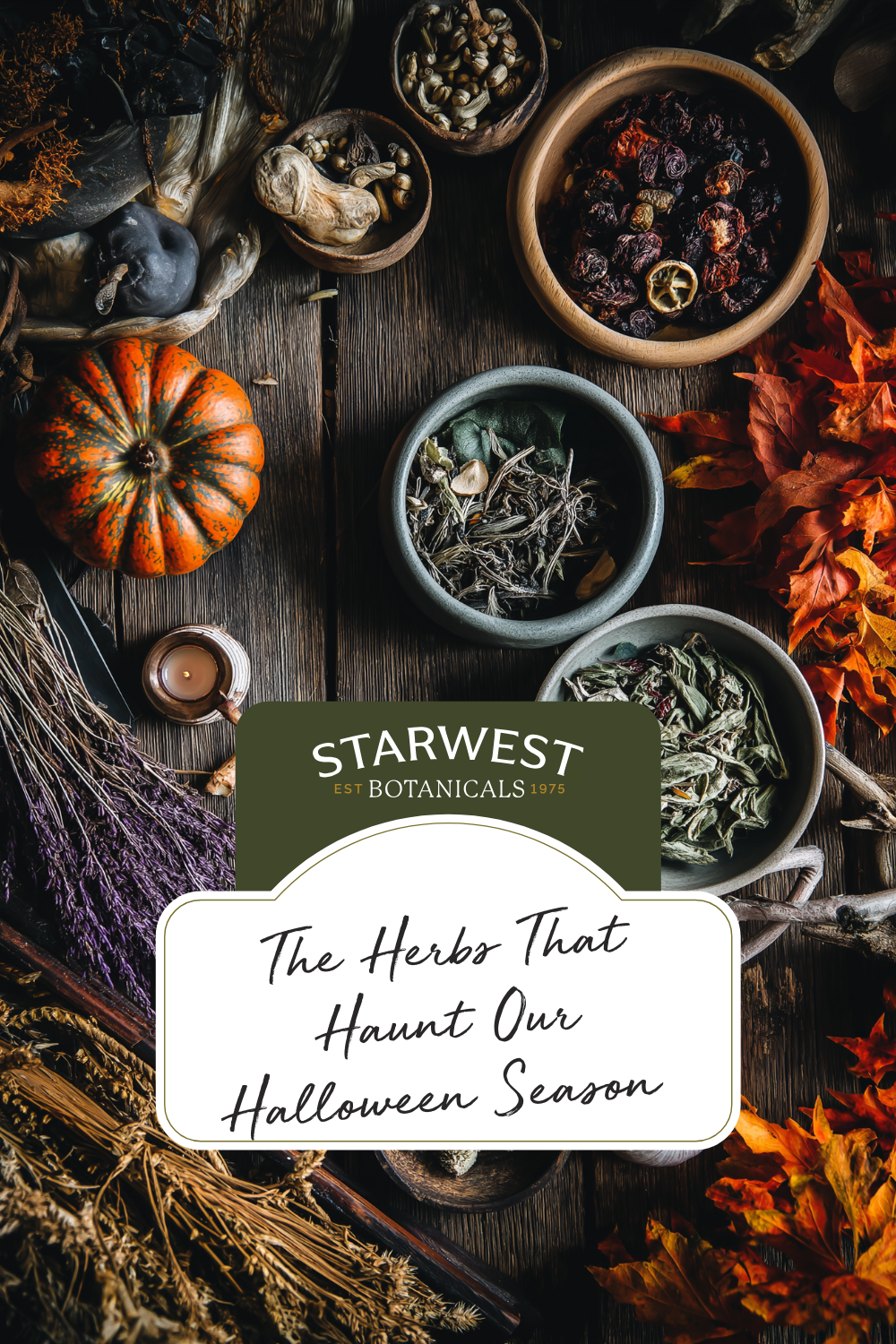The Herbs That Haunt Our Halloween Season
Posted by Starwest Botanicals Content Team on 10-24-2025
Every October in the office, things start to look a little different. A few more candles on the desks. A few more smoky tea blends in the kitchen. And at least once a day, someone says something like, “Okay, but who named it Devil’s Claw?”
We call this month our Spooky Herb Spotlight, the time when we lean into all the strange, spooky, and oddly named botanicals that remind us how magical the natural world really is.

It started with Mugwort. Even the name sounds like something you’d find in a witch’s cupboard. In folklore, mugwort was burned to keep away spirits and invite vivid dreams. Some even tucked it under their pillows to guide their sleep. These days, we love it for its soft, sage-like aroma, an herb that feels both grounding and otherworldly at the same time. It’s less about dark magic and more about the kind that lingers in your dreams.
Then Mattee said, “What about Wormwood?” Admit it, that one sounds cursed. But its story is even better. Wormwood is the herb behind absinthe, the mysterious “Green Fairy” that once captivated Parisian artists and poets. Its bitterness gives absinthe that sharp edge, the same edge that makes it so fascinating. In folklore, wormwood was used to ward off pests and bad energy; in reality, it’s just an herb with a bite.
And then Jason mentioned Devil’s Claw, which might just win the award for most intimidating name in the herb world. The hooked pods of its seed look like claws reaching from the earth, enough to inspire a few legends. When Kai first showed the dried pods in a meeting, Bassma jumped back and laughed, “That looks possessed!” But once you get past the spooky exterior, it’s just another incredible plant that reminds us not to judge an herb by its name.
We couldn’t do a spooky-season spotlight without Skullcap. We know, it sounds like something straight from a graveyard, not a teacup. The name actually comes from the shape of its tiny flowers, which look like little helmets. In the 1700s, people called it Mad Dog Weed and believed it could cure rabies. Thankfully, it’s been repurposed since then, now appreciated by herbalists for its naturally calming qualities and soft, herbal flavor. It’s proof that even the eeriest herbs can have the gentlest stories.
So yes, we like our herbs a little weird this time of year. We like that their names sound haunted, that their histories are tangled with myth, that they remind us nature has always had a touch of mystery in it.
Because if you really think about it, every herb is a kind of spell. A blend of history, chemistry, and wonder. And that’s exactly what keeps us enchanted, year after year.
Happy haunting, from all of us at Starwest Botanicals.

